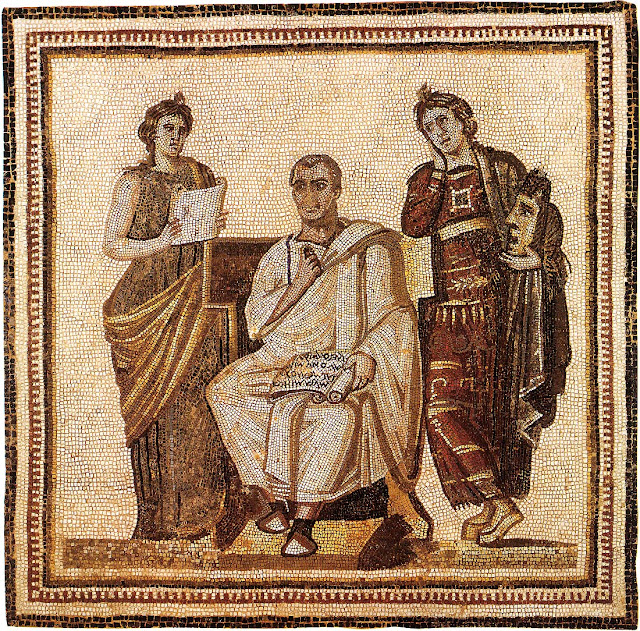P. Berol. 11632 (2nd cen. CE)Besides these literary "autographs," Gurd also mentioned several "documentary" drafts of letters, wills, and contracts. Maryline G. Parcia in Ptocheia, or, Odysseus in Disguise at Troy: P. Köln VI 245 (American Studies in Papyrology 31) also listed several literary "autographs" in note 7 pages 3-4 (I have not included the duplicate papyri that were already noted by Gurd above).
P. Köln VI 245 (3rd cen. CE)
PSI I 17 (3-5th cen CE)
P. Köln III 128 (1st cen. CE)
P. Ross. Georg. I 11 (3rd cen. CE)
P. Oxy VII 1015 (3rd cen. CE)
P. Berol. 10559A-B + P. Berol. 10558 (4th cen. CE)
P. Giss. 3 (117 CE)Each of these ancient examples of papyrus "autographs" (and other writing materials) have extensive marginal or interlinear corrections and re-writings. It is these markings (usually in the same hand as the main body of text) that indicate to papyrologists that these documents were unfinished and in the draft stage of composition. The assumption is that a completed work of literature would not have these types of extensive re-writings.These few examples give us a first hand glimpse of what the first-drafts of New Testament and other early Christian writings may have looked like before they were completed and released for copying and circulation.
P. Cairo Cat J 67097 (6th cen. CE draft of Dioscorus of Aphrodite)
Heitsch I (1st cen. CE) text on wooden tablets
A. Carlini, "Nuovi papiiri fiorentini," ASNP 35 (1966), 5-11 (1st cen. CE)
P. Oxy XXXVII 2816 (3rd cen. CE)
P. Oxy L 3537 (3rd-4th cen. CE)
P. Oxy L 3539 (3rd-4th cen. CE)
P. Oxy LIII 3702 (2nd-3rd cen. CE)
P. Oxy LIV 3723 (2nd cen. CE)
P. Yale II 105 (1st cen. CE)
P. Lond. 137 (2nd cen. CE)
 |
| P. Köln VI 245 (3rd cen. CE) Detail of interlinear alterations. |
 |
| P. Oxy VII 1015 (3rd cen. CE) Authorial Draft of an Encomium. |
 |
| P. Köln VI 245 (3rd cen. CE) Detail of interlinear alterations. |
[UPDATE]
I published a paper in 2016 that utilized a couple of the autographs referenced here.
"What are the NT Autographs? An Examination of the Doctrine of Inspiration and Inerrancy in Light of Greco-Roman Publication." JETS 59/2 (June 2016): 287-308.









